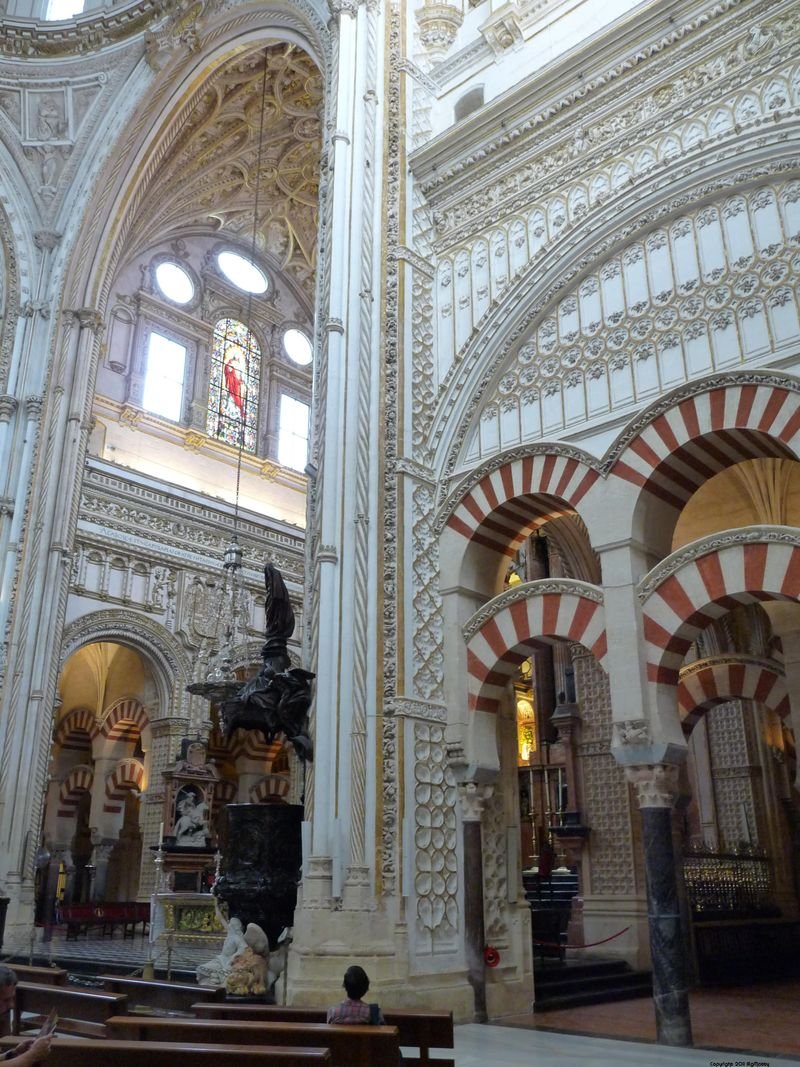La Mezquita de Córdoba مسجد قرطبة
We had a choice to make for a side trip from Sevilla: either a jaunt to Jerez for sherry tasting or a dash to Córdoba to check out La Mezquita, the Visigoth church turned Muslim mosque turned Catholic cathedral. We went with Córdoba, a decision we will never regret.
We spent a lovely day in Córdoba, complete with an amazing lunch (dishes of which will be featured in an upcoming post) and a stroll through the lovely town with a relaxed, welcoming energy. But the highlight was La Mezquita.
This is one old building. It began as a Visigothic Church in the year 600. The columns are salvaged from earlier Roman buildings. You can tell as they are mismatched and often either stacked on blocks or resting in holes to make them even.
It was converted into a mosque around 782, and built upon for two centuries thereafter. And it is beautiful. Arch after arch resting on column after column, stretching what seems like miles into the dark expanse. This spare, almost austere beauty is punctuated by side rooms that are breathtaking in both their design and decoration (see the picture on top).
Córdoba was captured by King Ferdinand III of Castile in the early 13th century, and the Mezquita began its change over to a Catholic cathedral, beginning with the minaret being turned into a bell tower, and small chapels being inserted into the mosque. Then, during the Renaissance, an enormous cathedral nave was inserted right down the middle. The result is startling.
The dark, subtle archways give way to a soaring, brightly white space with stained glass, angels and crucifixes ascending as if to heaven. It is a shock to the system, but not an unpleasant one.
The contrast, to me, is what makes the Mezquita. Yes, the mosque is sublime on its own and yes, as cathedral naves go, this one is rather average, which is made even more evident by the masterpiece of the mosque, but that isn't really the point.
First, the contrast in feeling - from subdued, almost internally focused to the upward-looking, heaven-centric - is something to be pondered for hours. Second, the history of religion in the Western world, from its roots to the modern day, is captured and displayed inside this one beautiful building.
The cacophonous combination of religions, customs and beliefs is what make the Mezquita so special to me. Take the picture above, with the Moorish arches framing the crucifix. Trust me, that was not in the original design. But it is striking, and beautiful, mostly because it wasn't planned. Like history itself, it just happened. That is what I like.
My understanding is that Muslims have asked if they could once again pray in this building. This request has not yet been granted. While I am not religious at all, I do understand the desire to do so.
In the end, I'd be all for this becoming a multi-faith site, with Muslims and Catholics praying side-by-side. (If there are any Visigoths still around, they should be welcomed, too.) I don't know if it ever will, but I don't see why not. There is a shared history in this region, and it would not be the spectacular place with the wonderful people, food, customs or attitude that it enjoys today, without it.
Just imagine what its shared future could become.




